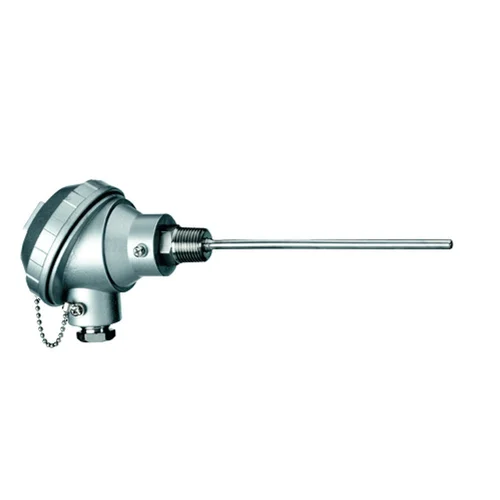One of the most commonly measured parameters in industrial applications is temperature. In metallurgy, pharmaceuticals, energy, or food processing, safety, efficiency and product quality require the correct temperature reading. The thermocouple is one of the most common devices that is used to do this.
What Is a Thermocouple?
A thermocouple is a temperature sensor that has been manufactured through the joining of two different metals at the ends. At a temperature, this junction gives out a voltage, and the voltage increases linearly with temperature. It is founded on the Seebeck effect, which says that a voltage (electromotive force) in a circuit between two different metals will be produced in case there is a difference in temperature across the junctions.Thermocouples are hardy, simple and can be designed to cover a very large temperature span-between cryogenic temperatures to very hot temperatures – up to 1800°C or higher, depending upon the unit.
How Do Thermocouples Work?
A thermocouple works on a very simple principle, that is, when two different metal wires are connected and the tips of the wires are at dissimilar temperatures, there is very little voltage (mV) that is generated. An instrument detects this voltage to be of the same temperature.
To be accurate in measurement, there is a known temperature benchmark junction (or cold junction), and reference-less measuring junction gives the exact reading of temperature.
Types of Thermocouples
The thermocouples are different in terms of temperature range, sensitivity, and the environment they are used in. The most popular ones are:
1. Type K (Nickel-Chromium/ Nickel-Alumel )
• Most generally used
• Temp range: -200°C to 1372°C
• Suited to general purposes.
2. Type J (Iron/Constantan)
• Lower temp range: -40°C to 750°C
• cost-effective equipment retrofit.
3. Type T (Constantan/Copper)
• used on very low temperatures.
• Cryogenic applications and laboratory applications.
4.Type E (Chromel/Constantan)
• Very sensitive
• Range: -200°C to 900°C
5. Type N, R, S, and B
• Specialty and high-temperature industrial applications.
• Mostly used in manufacturing of steel, glass and ceramics.
The benefits of Thermocouples
Thermocouples have a number of benefits that make them an excellent tool in the measurement of temperature in industries:
- Large Temperature Range – Does not record very high temperatures.
- Long-lived – Can be used in rough, high-pressure, high-vibration applications.
- Fast Response Time- Fast reaction to temperature variations.
- Economical -They are cheaper as compared to other temperature sensors.
- Multipurpose- Available in various shapes, sizes, and forms.
Common Application of Thermocouples
The thermocouples are applicable in various industries since they are flexible and dependable. They have widespread uses in:
- Light Industries, Furnaces and Boilers
Applied to gauge the combustion, and supply of optimum amounts of heat.
- Chemical and Petrochemical Plants
Used in reactors, distillation towers, and storage tanks. - Food and Beverage Industry
Recurring cooking, freezing and storage temperatures.
- Power Generation
Check exhaust and turbine temperatures.
- Manufacturing
Regulate temperature in metal works, glass works and plastic works.
- Medical and laboratory equipment
Applied in sterilizers, autoclaves and incubation chambers.
Considerations that should be made when choosing a Thermocouple
In choosing a thermocouple, the following factors are to be considered:
- Temperature range – Choose depending on the extreme temperatures of the process.
- Environment- Strenuous surroundings may demand a safeguarding covering.
- Accuracy and Sensitivity- Necessary when sensitive control is needed.
- Speed of Response- Necessary where there are rapidly changing temperatures.
- Equipment compatibility- Be sure that your kind of thermocouple will work with your recorder or temperature controller.
Tempsens Instruments, as a manufacturer of thermal solutions and thermocouples, is a reliable choice of suppliers with regards to industries that require accuracy and dependability in temperature measurements. By providing an impressive range of thermocouples to suit harsh conditions in industry, Tempsens provides performance, long life, and customization on a global standard. From a regular sensor to high-temperature solutions, Tempsens guarantees the precision and uniformity of the final results.
Guidelines for the correct use of Thermocouples
In order to obtain the optimum out of your thermocouple:
- Use proper insulation as well as sheathing in your environment.
- Do periodic calibration to ensure accuracy.
- Sharp temperature extremes must be avoided to reduce thermal shock.
- Change outdated junctions or damaged wires so as to maintain consistency.
- Installation: Do not install in places that may cause vibration, which may destroy the device.
Conclusion
The thermocouples are the primary instruments in industrial thermometry. Their simplicity, cost-effectiveness, and wide-ranging application make them indispensable in both high- and low-temperature environments. When reliability and accuracy are non-negotiable, it is best to select a well-known and trusted provider such as Tempsens Instruments so that your processes remain efficient, compliant, and safe.
Whether you are a plant engineer, a lab technician, or a maintenance professional, understanding and using the right thermocouple can make a measurable difference in your operation’s success.






